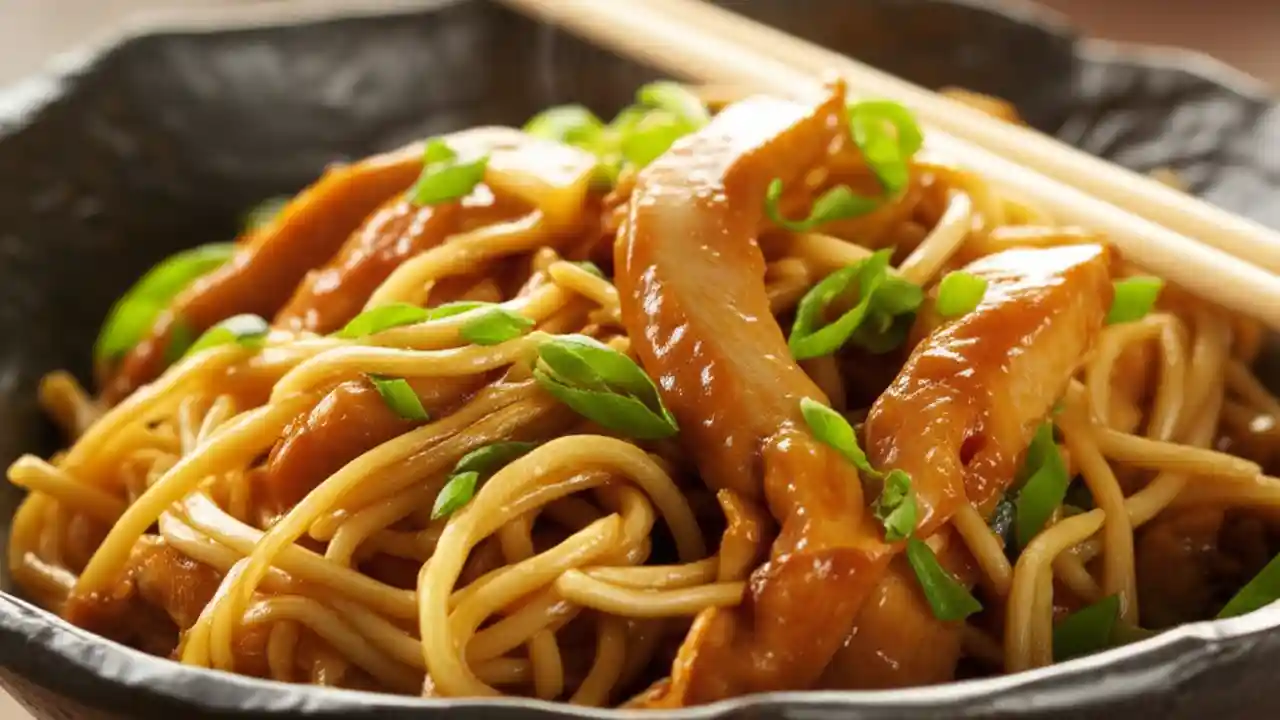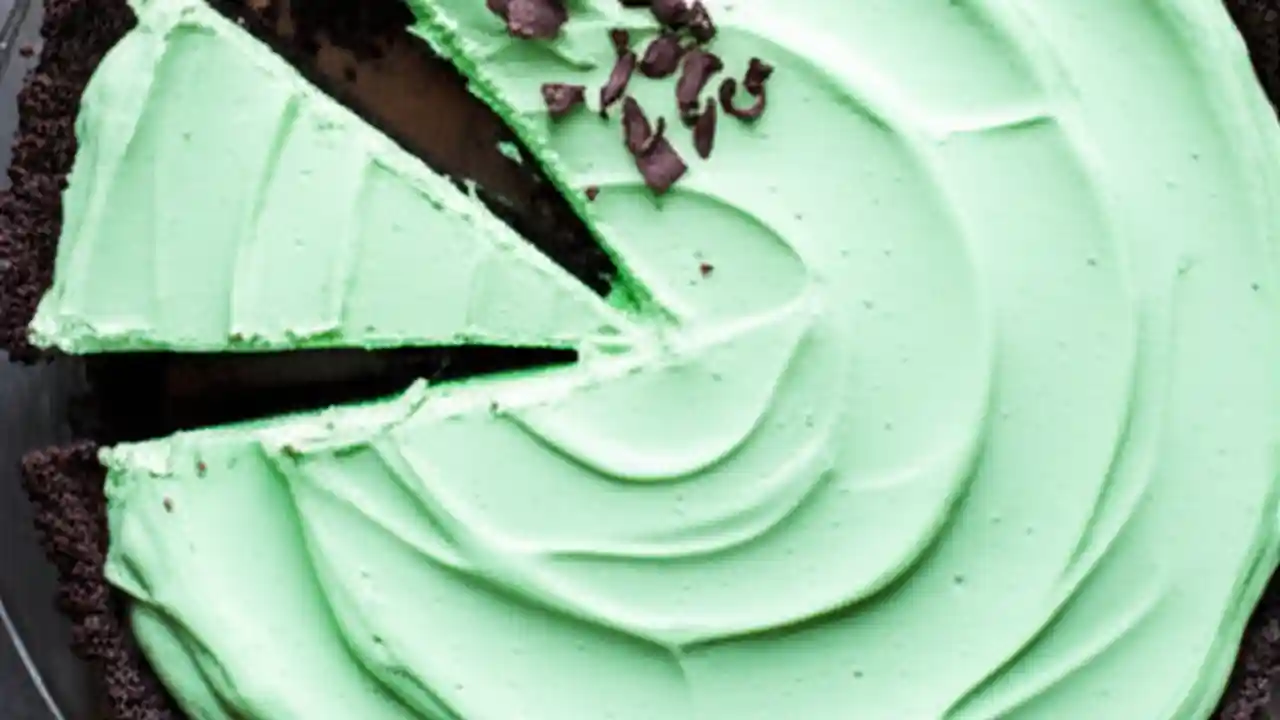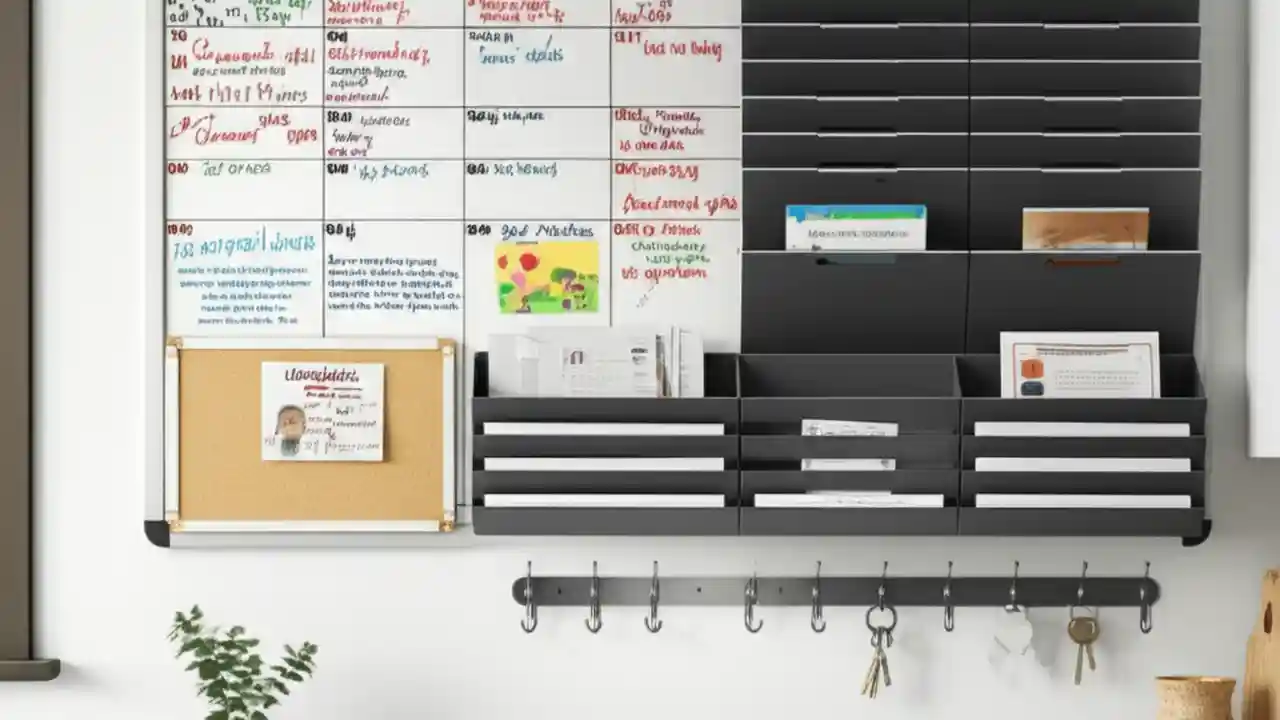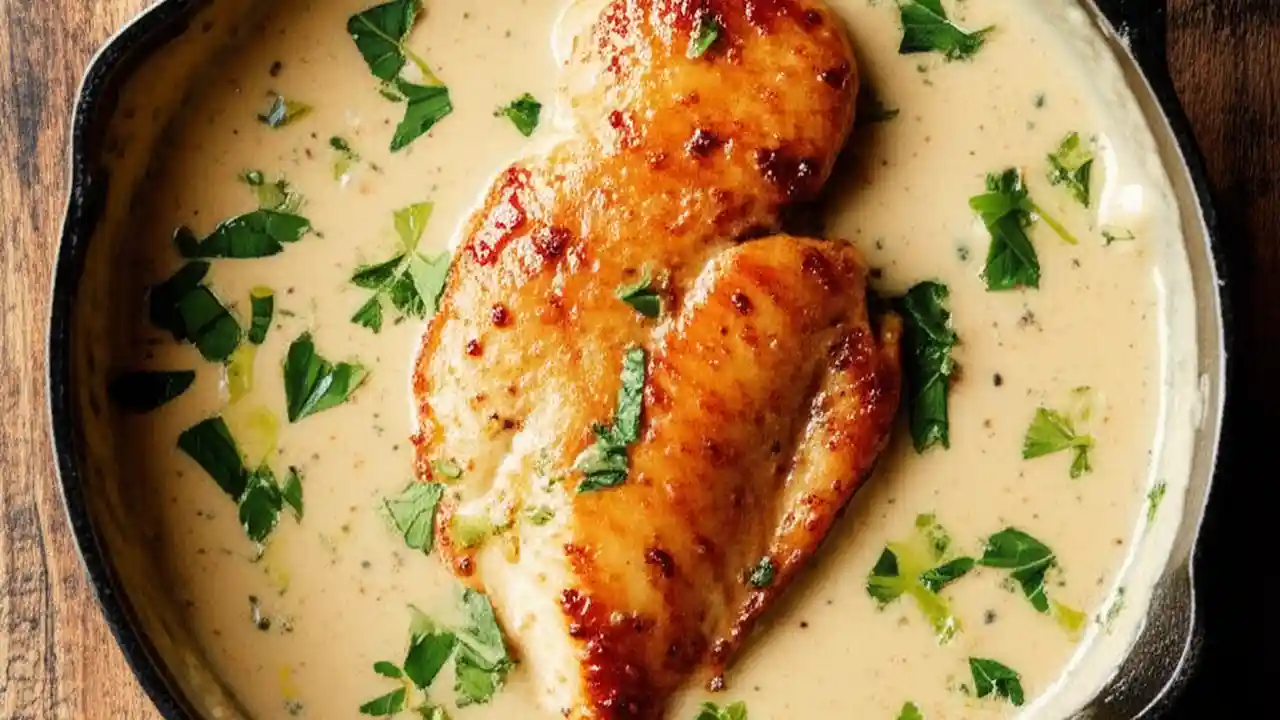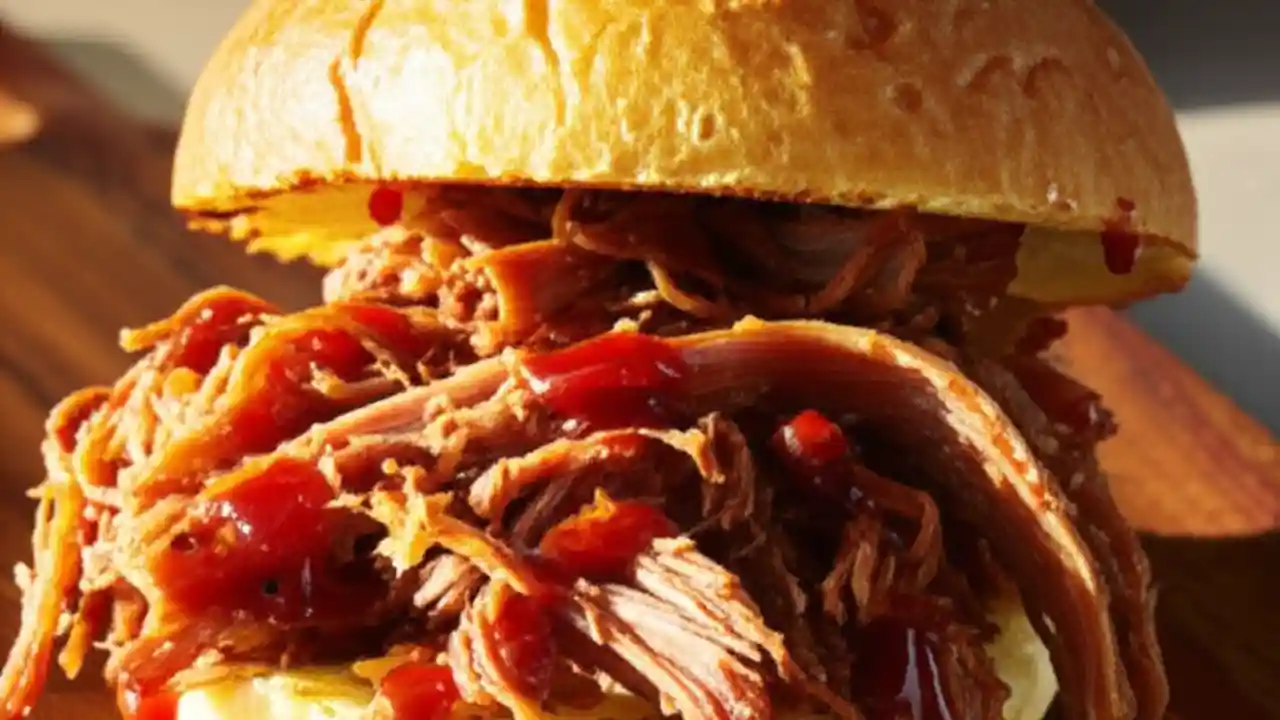Making your own healthy granola is surprisingly simple: just toss rolled oats with a healthy fat like coconut oil, a natural sweetener like maple syrup, and your favorite nuts and spices, then bake at a low temperature until golden and crisp. It’s a foolproof way to control ingredients, cut out processed sugars, and create a breakfast that’s perfectly tailored to your taste and nutritional needs.
For years, I’ve seen people buy expensive, so-called “healthy” granola from stores, only to find it’s packed with hidden sugars and unhealthy oils. The truth is, the best, healthiest, and most delicious granola is the one you make in your own kitchen. It’s also far more budget-friendly than store-bought options.
In this definitive 2025 guide, we’ll walk through everything. We’ll start with a bulletproof base recipe, explore how to choose the best ingredients for maximum health benefits, and troubleshoot common issues like soggy granola. We’ll also cover how to customize it for any diet, from gluten-free to low-sugar, ensuring you can create the perfect batch every single time.
Table of Contents
The Foundation: Your Granola Base Recipe
Before we dive into all the fun customizations, let’s nail the fundamentals. The secret to amazing granola isn’t a complicated list of ingredients; it’s the right ratio and the right technique. Think of this as your master blueprint.
What is the perfect base recipe for healthy granola?
This is my go-to recipe that has never failed me. It’s the perfect canvas for you to build upon. The key is the ratio of dry to wet ingredients. For every 4 cups of rolled oats, you’ll want about 1/2 cup of liquid fat and 1/2 cup of liquid sweetener.
Here’s a simple, step-by-step guide to get you started:
- Preheat & Prep: Set your oven to 300°F (150°C). Line a large baking sheet with parchment paper. This is non-negotiable for easy cleanup and preventing sticking.
- Mix Dry Ingredients: In a large bowl, combine 4 cups of old-fashioned rolled oats, 1 cup of raw nuts or seeds (like almonds, pecans, or pumpkin seeds), 1 teaspoon of cinnamon, and 1/2 teaspoon of fine sea salt. Stir it all together.
- Mix Wet Ingredients: In a separate, smaller bowl, whisk together 1/2 cup of melted coconut oil (or another healthy fat) and 1/2 cup of pure maple syrup (or another liquid sweetener). Add 1 teaspoon of vanilla extract for extra flavor.
- Combine: Pour the wet mixture over the dry oat mixture. Stir thoroughly with a spatula until every single oat and nut is lightly coated. Don’t rush this step!
- Bake: Spread the granola in a thin, even layer on your prepared baking sheet. Bake for 20 minutes, then remove from the oven and stir. This ensures even browning. Return to the oven and bake for another 15-20 minutes, or until it’s a light golden brown.
- Cool Completely: This is the most important step for crispy granola! Let it cool on the baking sheet on a wire rack for at least one hour without touching it. It will crisp up as it cools. Once cool, you can break it into clusters.
If you plan to add dried fruit, wait until the granola has completely cooled. Adding it before baking will turn the fruit into hard, burnt little rocks.
How do I get that perfectly crispy, clumpy granola?
Ah, the quest for the perfect cluster! It’s what separates good granola from great granola. Soggy, sad granola is a common frustration, but achieving that signature crunch is easy with a few key tricks.
- Don’t Crowd the Pan: Spread your granola in a thin, even layer. If you have too much for one pan, use two. Overcrowding traps steam, which is the enemy of crispiness.
- Press It Down: Before baking, use the back of a spatula to gently press the granola down into the pan. This encourages the oats to stick together and form those desirable clumps.
- Hands Off During Cooling: I can’t stress this enough. Let the granola cool completely on the pan without stirring it. As the melted sugar and oil cool, they act like glue, solidifying those clumps you worked so hard for. Be patient!
*Low and Slow is the Way to Go: A lower oven temperature (300°F / 150°C) is crucial. High heat will toast the outside too quickly, leaving the inside soft and chewy. Baking low and slow dehydrates the granola, leading to a better crunch.
Choosing Your Ingredients: The Healthy Granola Pantry
The beauty of homemade granola lies in total control. You are the chef, and you get to decide what goes in. Let’s break down the core components and how to make the healthiest choices.
What are the best oats for making granola?
The type of oat you choose makes a huge difference in the final texture. For classic, hearty granola, you want one specific type.
Old-Fashioned Rolled Oats are the winner. They have the perfect thickness and texture to hold up to baking, resulting in a chewy-yet-crisp final product. They absorb the wet ingredients well without turning to mush.
Here’s a quick look at why other oats are less ideal:
- Quick or Instant Oats: These are too thin and processed. They will absorb the liquid too fast and can result in a texture that’s more like dust than granola. Avoid them.
- Steel-Cut Oats: These are minimally processed oat groats that have been chopped. They are fantastic for porridge but are too hard and dense for classic granola. They won’t soften enough during the short baking time.
Which fats are the healthiest choices for granola?
Fat is essential for crispiness and flavor, but not all fats are created equal. You want to choose an oil that tastes good and offers some health benefits. Here are my top picks:
| Fat Type | Why It’s a Good Choice | Flavor Profile |
|---|---|---|
| Unrefined Coconut Oil | Rich in MCTs (medium-chain triglycerides), it’s great for energy. It solidifies at room temperature, which helps create fantastic clusters. | Adds a subtle, pleasant coconut flavor that pairs well with most granola ingredients. |
| Avocado Oil | A great source of monounsaturated fats and has a high smoke point, though that’s less critical at low baking temperatures. | Very neutral, making it perfect if you don’t want the oil to influence the final taste. |
| Extra Virgin Olive Oil | Packed with heart-healthy monounsaturated fats and antioxidants. A staple of the Mediterranean diet for a reason. | Can have a peppery or fruity taste. Best for more savory granola combinations, perhaps with rosemary and pistachios. |
I would generally steer clear of vegetable oils like canola or soybean oil, as they are often highly processed and don’t offer the same health benefits.
What are the best natural sweeteners for low-sugar granola?
This is where homemade granola truly shines. You can dramatically reduce the sugar content compared to store-bought brands, which often list sugar as a primary ingredient. Liquid sweeteners are best as they help bind the granola.
- Pure Maple Syrup: My personal favorite. It provides a wonderful, complex flavor and contains minerals like manganese and zinc. Be sure to use 100% pure maple syrup, not pancake syrup.
- Raw Honey: Another excellent choice with antibacterial properties. Its flavor can be more pronounced than maple syrup. Note: honey is not considered vegan.
- Date Syrup or Paste: A great whole-food option. You can make a paste by blending soaked dates with a little water. It adds a rich, caramel-like sweetness and extra fiber.
- Monk Fruit Sweetener (Liquid): If you want a zero-sugar option, a liquid monk fruit blend can work. You may need to experiment with quantities, and it won’t provide the same “sticky” quality for clumping as sugar-based syrups.
A pro tip for reducing sugar is to use less sweetener overall and lean on spices like cinnamon, cardamom, and vanilla extract to enhance the perception of sweetness.
What can I add to my granola for extra flavor and nutrients?
This is the fun part! The base recipe is just the beginning. Think of your pantry as a playground.
- Nuts: Almonds, walnuts, pecans, cashews, pistachios. Use them raw, as they will toast perfectly in the oven. Walnuts are a great source of omega-3s.
- Seeds: Pumpkin seeds (pepitas), sunflower seeds, chia seeds, flax seeds. Chia and flax are best added after baking to preserve their delicate omega-3 fats, but pumpkin and sunflower seeds can be baked with the oats.
- Spices: Cinnamon is a classic, but don’t stop there. Try cardamom, nutmeg, ginger, or even a pinch of cayenne for a spicy-sweet kick.
- Unsweetened Coconut Flakes: Add these in the last 5-10 minutes of baking. They toast very quickly and can burn if added at the beginning.
- Dried Fruit: Raisins, cranberries, chopped apricots, cherries. Always add these *after* the granola has cooled completely to prevent them from burning and getting hard.
- Chocolate: For a more decadent treat, stir in dark chocolate chips or chunks after the granola is fully cooled. The residual heat from the pan will melt them if you add them too soon.
Customizing for Your Dietary Needs
One of the most empowering aspects of making your own granola is adapting it to your specific health requirements. It’s nearly impossible to find a store-bought version that ticks all the boxes for being gluten-free, nut-free, *and* low-sugar.
How can I make my granola gluten-free?
This is an easy swap! While oats are naturally gluten-free, they are often processed in facilities that also handle wheat, barley, and rye, leading to cross-contamination. To make your granola truly gluten-free, simply purchase oats that are explicitly labeled “Certified Gluten-Free.” All other ingredients in the base recipe are naturally gluten-free, so this one simple substitution is all you need.
Is it possible to make truly sugar-free or very low-sugar granola?
Absolutely. Achieving a “zero sugar” granola is challenging because the sweetener acts as a binder, but you can get very close.
Here’s how:
- Use a Sugar-Free Binder: Whisk a couple of egg whites until frothy and use them to coat the oat mixture. As they bake, they will create a wonderfully crispy and clumpy texture without any sugar.
- Rely on Spices: Amp up the cinnamon, vanilla, and cardamom. These spices trick your brain into perceiving sweetness without adding any sugar.
- Add Sweetness After Baking: Once cooled, you can toss the granola with a powdered sugar-free sweetener like erythritol or sprinkle with a few chopped dates for pockets of natural sweetness.
How do I make a nut-free granola for allergies?
Making a delicious and crunchy nut-free granola is simple. The key is to replace the nuts with a variety of seeds and other crunchy ingredients to maintain a satisfying texture.
| Instead of Nuts, Use… | Why It Works |
|---|---|
| Pumpkin Seeds (Pepitas) | Provide a great crunch and are packed with magnesium and zinc. |
| Sunflower Seeds | Offer a satisfying bite and are a good source of Vitamin E. |
| Unsweetened Coconut Flakes | Add texture and a lovely toasted flavor (add in the last 5-10 minutes of baking). |
| Puffed Rice or Quinoa | Stir these in after baking for a light, airy crunch. |
Always ensure your oats and other ingredients are processed in a nut-free facility if the allergy is severe.
Troubleshooting & Pro Tips
Even with the best recipe, things can sometimes go sideways. After making hundreds of batches over the years, I’ve seen it all. Here are the solutions to the most common granola-making problems.
Why is my homemade granola soggy or chewy?
This is the number one issue people face. It almost always comes down to one of three things:
- Too Much Wet Stuff: You went overboard on the oil or syrup. Stick to the 4-to-1 dry-to-wet ratio (4 cups oats to 1 cup total liquid fat/sweetener).
- Oven Was Too Hot: A high temperature toasts the outside before the inside has a chance to dry out and get crispy. Stick to 300°F (150°C).
- You Didn’t Let It Cool Undisturbed: You got impatient and stirred the hot granola. Let it sit on the pan for a full hour. This is where the magic happens and the crunch develops.
What are the most common mistakes to avoid when making granola?
- Using the Wrong Oats: Stick with old-fashioned rolled oats for the best texture.
- Burning the Add-ins: Add delicate ingredients like coconut flakes and dried fruit at the right time (coconut near the end of baking, fruit after cooling).
- Uneven Baking: Don’t forget to stir the granola halfway through the baking process for an even, golden-brown finish.
- Improper Storage: Storing granola before it’s 100% cool will trap moisture and make it soft.
How do I properly store homemade granola and how long does it last?
Proper storage is key to preserving that perfect crunch you worked so hard to achieve. First, ensure the granola is completely, totally, 100% cool. Any residual warmth will create condensation in your storage container, leading to sogginess.
Store your cooled granola in an airtight container at room temperature. A large glass jar with a tight-fitting lid is perfect. Stored this way, your homemade granola will stay fresh and crunchy for up to two weeks. You can also freeze it in a sealed bag for up to three months.
Homemade vs. Store-Bought: Is It Worth It?
In a world of convenience, you might wonder if taking 30 minutes to make your own granola is truly worth the effort. My answer is a resounding yes, for two major reasons: health and cost.
Is homemade granola actually healthier than store-bought versions?
Yes, by a long shot. The term “healthy” on a box of granola can be very misleading. Many commercial granolas are loaded with refined sugars (like corn syrup), unhealthy fats (like palm or canola oil), and unnecessary preservatives.
When you make it yourself, you have complete authority. You control the type and amount of sugar, the quality of the fat, and you can pack it with nutrient-dense ingredients like walnuts and flax seeds. There are no hidden ingredients or marketing gimmicks.
How much money can I save by making my own granola?
The savings are significant. A small 11 oz (311g) bag of “premium” or “healthy” granola can easily cost $6-$9. You can buy a large 42 oz (1.19kg) container of old-fashioned oats for less than that, which will yield multiple large batches.
While the initial investment in nuts, seeds, and pure maple syrup might seem high, these ingredients last a long time. Per serving, homemade granola often costs less than half the price of its store-bought equivalent, and it’s a far superior product in both taste and nutritional value.
Conclusion
Making your own healthy granola is one of the easiest and most rewarding kitchen projects you can undertake. By simply baking oats with a little oil and sweetener, you unlock a world of delicious, nutritious, and affordable breakfast possibilities. You are in complete control, free from the hidden sugars and processed ingredients found in so many store-bought options. It’s more than just a recipe; it’s a healthier, tastier, and smarter way to start your day.
Now that you have the ultimate guide, I encourage you to get in the kitchen and try it! Start with the base recipe and then let your creativity run wild. If you found this guide helpful, please share it with a friend who’s tired of overpriced, sugary store-bought granola!



